Atop the high ridge nestled into a curve of the Ohio Brush Creek, the Serpent Mound conjures of a distant time and place. The largest surviving effigy mound in the world, the Serpent Mound is part of an ancient network of prehistoric mounds built by successive Native American cultures in the Ohio Valley. The Adena, Hopewell, and Fort Ancient peoples inhabited this area for over two millennia and built earthen structures ranging from massive circular enclosures to small conical burial mounds. The Serpent Mound stands out as an anomaly and is still much of a mystery. Today, visitors from all over the world come to visit this sacred site.
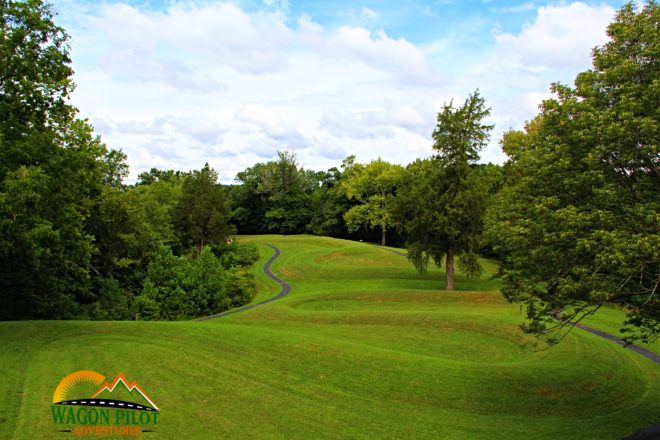
Ever since seeing a picture of the Serpent Mound in a fifth grade text book years ago, I have longed to see it in person. While planning a hiking trip to the Hocking Hills, I finally got my wish. Having visited numerous historical sites over the years, there are always those which leave an impression in my mind. The ethereal beauty of Bonaventure cemetery in Savannah, the gravity of the Levi Coffin house where so many slaves made their way towards freedom, or the apparition I witnessed at the Blennerhassett mansion. The Serpent Mound left me with such an indelible image.
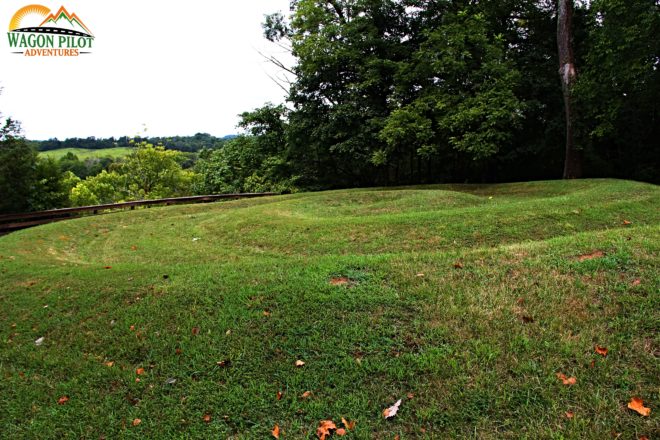
Serpent Mound Crater
Staring out across the rolling countryside you wouldn’t guess the Serpent Mound sits atop the remnants of an ancient meteor crater. Roughly 250 million years ago the impact created a massive crater, but also heaved up land creating the ridge. While the crater has eroded into nothing, the ridge became a prominent feature towering over the surrounding area. The plateau provided the perfect platform for their massive effigy mound.
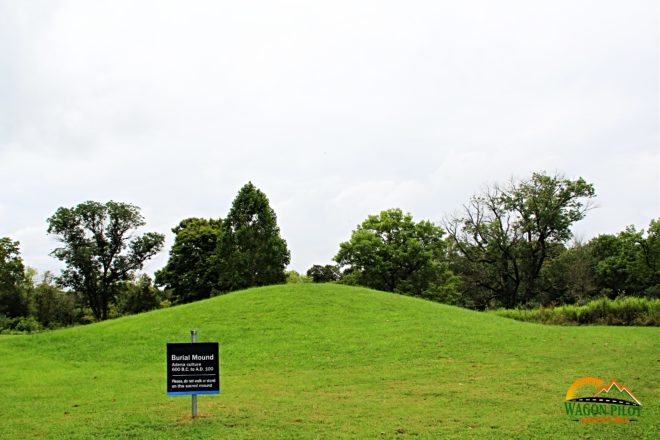
Who built the Serpent Mound?
Harvard archaeologist Frederic Ward Putnam explored the Serpent Mound in the 1880s. He was so impressed with the mound, and concerned about it being lost to development, that he helped raise funds to purchase the current 60 acre site in 1886. He spent the next few years carrying out excavations on the Serpent Mound and the three surrounding conical burial mounds.
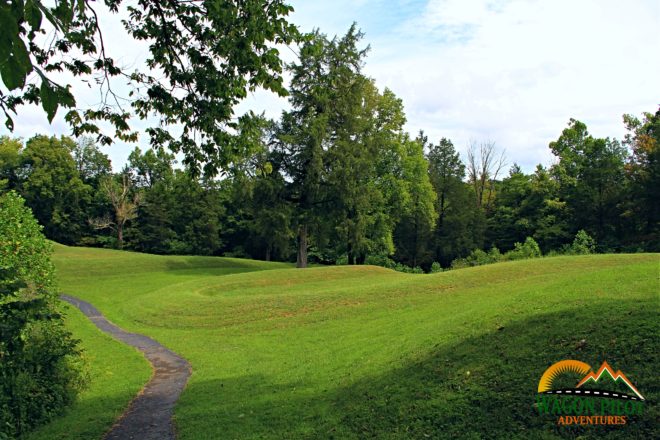
Putnam’s work showed the mound had been built with an outline of rocks topped with clay and topsoil layers. More recent technology has revealed an additional curve of the serpent that was removed at some point. What was not found during any of the archaeological work over the years are artifacts to help pinpoint exactly who built and contributed to the Serpent mound. Three smaller conical mounds were also excavated by Putnam and were confirmed to be burial mounds. One was used by the Fort Ancient people (1000AD to 1650AD) and two by the older Adena people (800BC to 100AD).
With at least two of the three major prehistoric cultures using the area, and no identifying artifacts discovered in the Serpent mound, the origins of the effigy are still a mystery. Currently, evidence and theories seem to lean more towards the older Adena culture as the original builders. Radiocarbon dating has given mixed time periods, though archaeological technology has been rapidly advancing in recent years and may reveal more clues or locations to excavate in the near future.
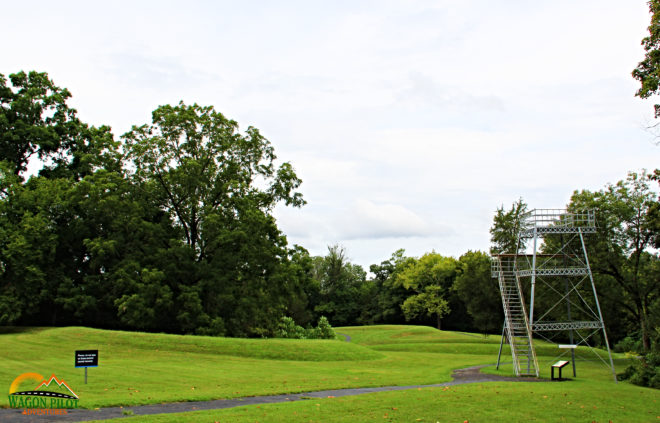
What was the Serpent Mound used for?
With no artifacts found in the mound and no written history of the serpent’s meaning, the precise use(s) of the Serpent Mound are up for debate. With the closeness of multiple burial mounds, perhaps the Serpent served as part of burial customs or a protective symbol of the afterlife. Others look to the sky for explanations. The head of the snake appears to align with the summer solstice sunset and the coils of the tail may contain pointers to the winter solstice and equinox. Whatever the original vision was for the Serpent Mound’s creators, it was a major undertaking and of great importance. Local Native American tribes still hold the site as sacred.
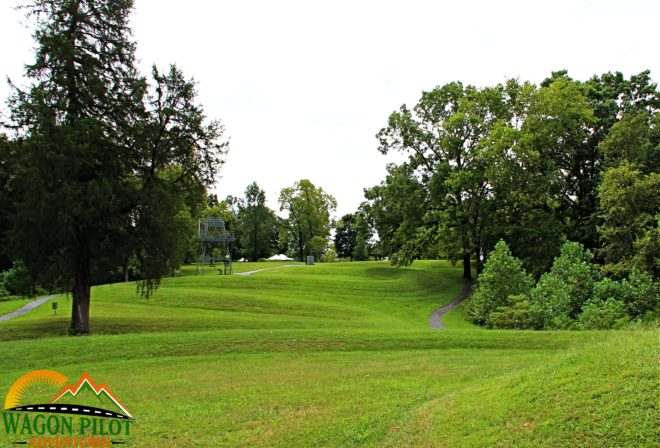
Visiting Ohio’s Serpent Mound
Within a two hour drive from both Cincinnati and Columbus, the Serpent Mound is off the beaten path, but still easily accessible. All locations within the 60 acre site are close to the parking lot and easy to walk around. The mound itself has an asphalt pathway which follows along its contours; allowing visitors to get up close and provides decent handicap access.
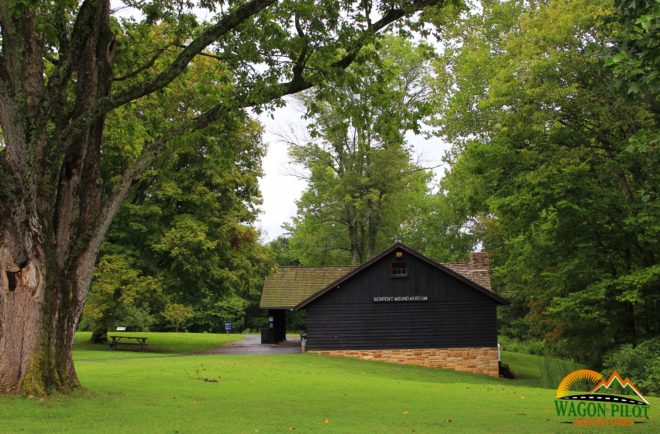
Begin your journey at the visitor center. Pay the parking fee, $8/vehicle, then explore the unique items in the store and chat with the knowledgeable staff. There is a tiny, but informative museum in the building. From there, set out on the pathway around the Serpent Mound. The walk will give you a few glimpses of the dramatic views of the surrounding land and a good sense of the scale for the 1348 long serpent. There are informative signs along the way. At the end, climb the tower for a bird’s eye view of the entire effigy mound. The tower is old and a bit rickety, but well worth seeing the Serpent Mound in all its glory. The burial mounds are worth a visit, especially the larger one near the museum. An interesting picnic shelter and bathroom buildings from the 1930s are located next to the parking lot.
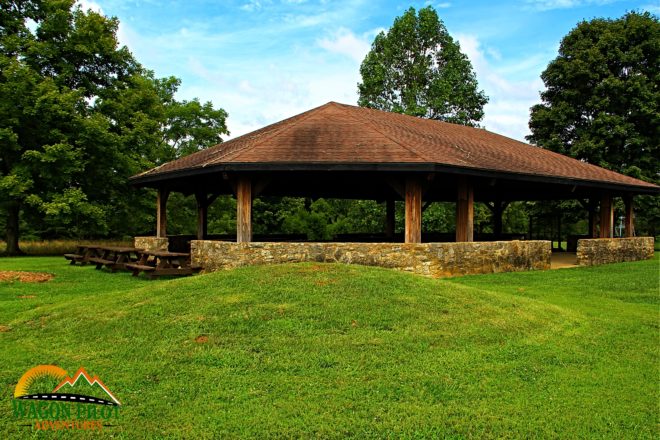
Serpent Mound Admission and Directions
The Serpent Mound is located at 3850 State Road 73 near Peebles, Ohio 45660. Note that the site road may not be plowed in the winter months. Admission is $8 per vehicle or $4 per motorcycle. AN annual parking pass is available for $15 per year.
The Serpent Mound site times vary throughout the year. The site itself is open 9:00am until dusk. On solstices and equinoxes it is open dawn to dusk.
Serpent Mound Museum Hours
- January and February – CLOSED
- March – 10 to 4 weekends only
- April – 10 to 4 daily
- May through October – Monday through Thursday 10 to 4, Friday and Saturday 9 to 6, and Sundays 9 to 5.
- November and December – 10 to 4 weekends.
For more information and the latest hours, events, and more visit their official website.
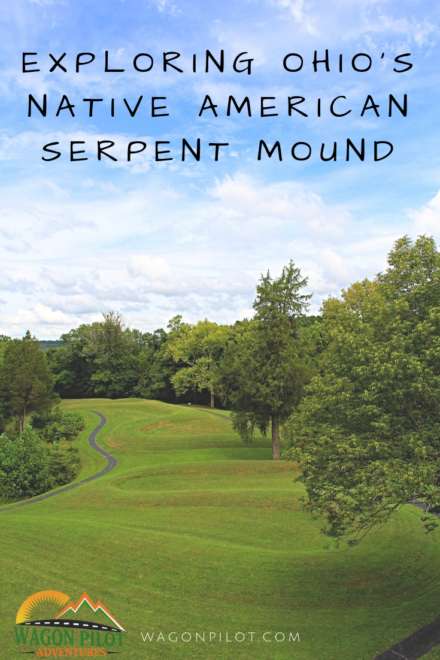




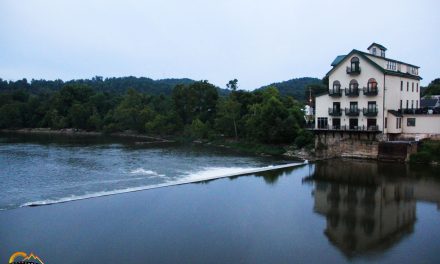
I’ve wanted to visit Serpent Mound since we learned Ohio history in 4th grade. Somehow I’ve never managed to stop. My husband, surprisingly, has zero interest in this one so it may be one I explore solo or with a friend. Thanks for sharing your visit and inspiring me to plan a visit.